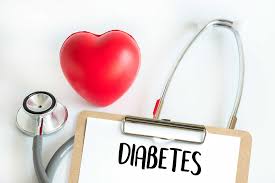The difference between type 1 diabetes and type 2 diabetes

Diabetes is a group of metabolic diseases characterized by high blood sugar. Hyperglycemia is caused by defective insulin secretion or impaired biological effects, or both. The long-term high blood sugar in diabetes causes chronic damage and dysfunction of various tissues, especially the eyes, kidneys, heart, blood vessels, and nerves. At present, diabetes can be divided into two types, namely type 1 and type 2 diabetes. The following explains how to distinguish between these two different causes of diabetes.
The cause of the difference:
Type 1 diabetes: genetic defects, unable to produce enough insulin autonomously, lack of insulin can not allow cells to store excess blood sugar, and the human body will experience hyperglycemia.
Type 2 diabetes: Acquired insulin resistance, insulin secretion is normal, but insulin receptors cannot work normally, cells cannot respond to insulin to store excess blood sugar, and the human body develops hyperglycemia.
Difference in clinical manifestations:
Type 1 diabetes: The typical symptoms of "three more and one less" (polydipsia, polyuria, polyphagia, and weight loss) appear when severe hyperglycemia occurs, and the "three more and one less" symptoms are more obvious when ketosis or ketoacidosis occurs .
Type 2 diabetes: Fatigue, obesity, thirst, and macrovascular and microvascular complications often occur before the diagnosis is confirmed.
Diagnosis difference:
Type 1 diabetes: The age of onset is relatively young, mostly under 30 years of age, the onset is sudden, polydipsia, polyuria, polyphagia, weight loss, high blood sugar levels, and many patients with ketoacidosis as the first symptom, low serum insulin and C-peptide , ICA, IAA or GAD antibodies can be positive. Oral medication alone is ineffective, and insulin treatment is required.
Type 2 diabetes: It is common in middle-aged and elderly people. The incidence of obesity is high. It is often accompanied by hypertension, dyslipidemia, arteriosclerosis and other diseases. Insidious onset, no symptoms in the early stage, or only mild fatigue, thirst, and insignificant increase in blood sugar need to undergo a glucose tolerance test to confirm the diagnosis. Serum insulin levels are normal or increased in the early stage and low in the late stage.
Treatment difference:
Type 1 diabetes: It depends on insulin to control blood sugar, so people with type 1 diabetes can control hyperglycemia and stabilize the condition by injecting insulin. Oral hypoglycemic drugs are generally ineffective.
Type 2 diabetes: There is no need to rely on insulin injections to lower blood sugar. As long as reasonable diet control and appropriate oral hypoglycemic drugs are used, certain effects can be obtained. Of course, when oral hypoglycemic drugs fail, pancreatic B cell function tends to fail Or when severe acute and chronic complications occur, it is also an indication for insulin.
The difference between complications:
Type 1 diabetes: ketoacidosis is prone to occur, and it is easy to be complicated by fundus retinopathy, nephropathy and neuropathy. Type 1 diabetes has less common arteriosclerotic lesions of the heart, brain, kidney or limbs.
Type 2 diabetes: ketoacidosis is less likely to occur, and fundus retinopathy, nephropathy, and neuropathy similar to type 1 diabetes may occur. In addition, the incidence of heart, brain, and renal vascular atherosclerotic lesions is higher and combined Hypertension is also very common. Therefore, the chance of coronary heart disease and cerebrovascular accidents in type 2 diabetic patients far exceeds that of type 1 diabetic patients. This is a very obvious difference.



